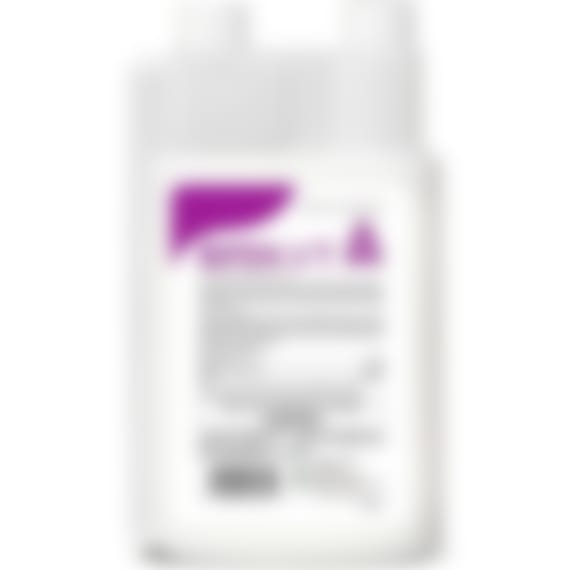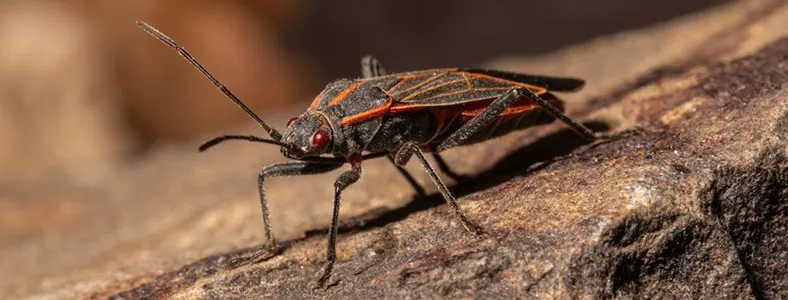
How to Get Rid of Boxelder Bugs
March 22, 2024
Get Rid of Boxelder Bugs Once & For All
Prevention is key to getting rid of boxelder bugs. Spray the exterior walls of your home in the fall with a residual insecticide to stop them from over-wintering if you have not sprayed them earlier.
If you treat earlier (early summer months), you can control the immature stages of boxelder bugs. Ideally, spray twice, once in the spring-early summer months when they emerge and once in the fall when they seek shelter.
If your home has a prior history of boxelder bugs, find and seal as many exterior cracks as possible during the summer.
-
The easiest way to remove boxelder bugs once they are indoors is with a vacuum cleaner.
-
You can also use an insecticide spray around the baseboards and window seals on the home's interior to further control this red and black bug.
-
However, interior spray should be the last line of defense because it won't stop the bugs from coming into the home. The boxelder bug will eventually die after it comes into contact with the insecticide.
Key Takeaway
To prevent these red and black bugs from entering your home in the fall, treat the outside perimeter with a good all-purpose concentrate.
Pay particular attention to the south and west exposure of the house.
Recommended Residual Insecticides For Boxelder Bug Control
Riddy Pest Pro Subscription - Get customized insecticides shipped to your home
To help prevent box elder bugs, cluster flies, ladybugs, and similar pests from entering in the fall, spray fast-acting synthetic pyrethroids such as the ones listed below on the structure's exterior walls.
Spray around eaves, attic vents, windows, doors, under-fascia lips, soffits, siding (including under lips), and any other possible entry points, concentrating on the south and the southwest sides.
It is also helpful to spray around the perimeter. Shady areas are less likely to attract a boxelder bug population. Spray Bifen I/T or Avesta CS around the perimeter outside. Avesta CS may also be sprayed on the inside.
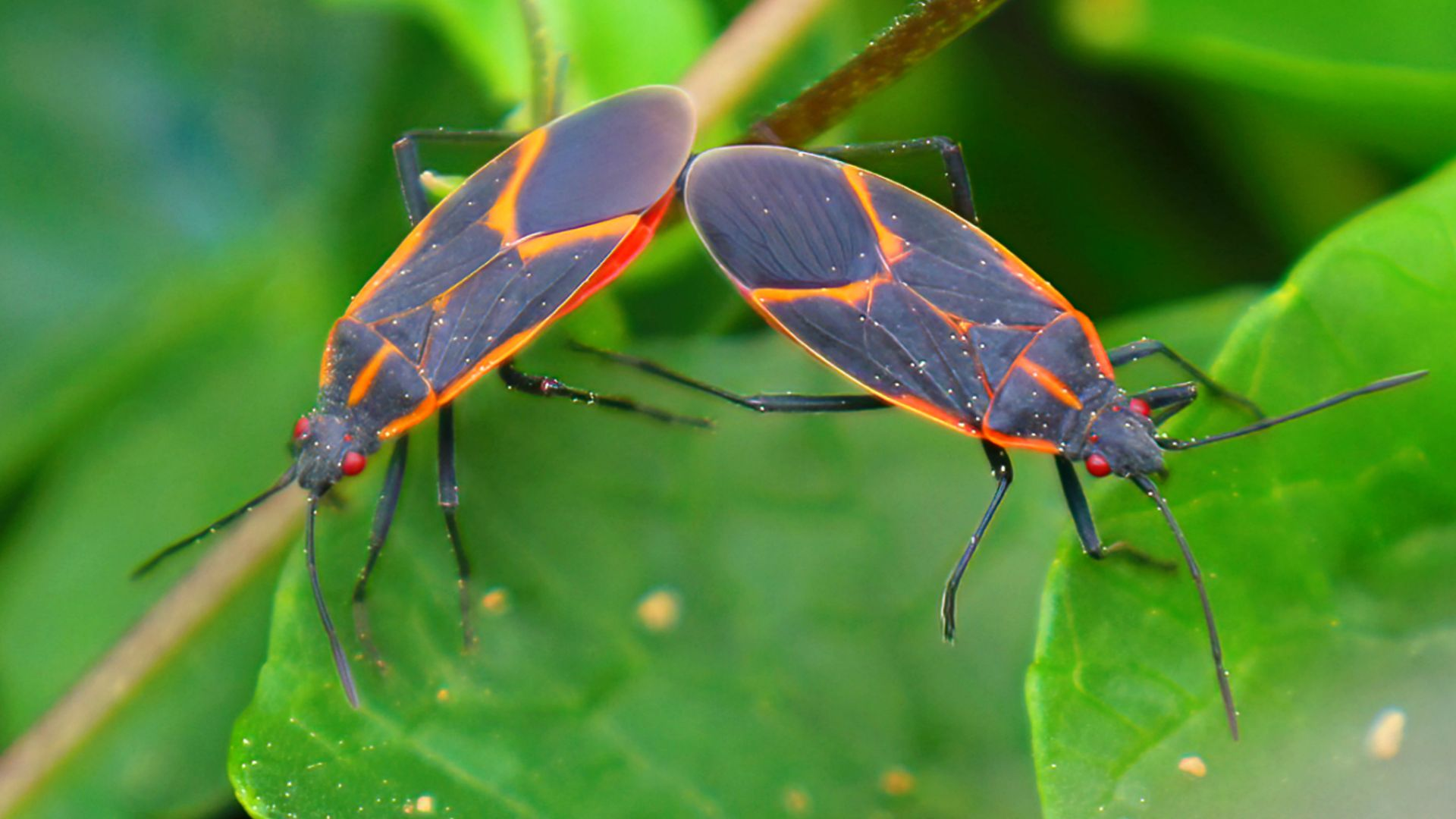
Boxelder Bug Identification
What are Boxelder Bugs?
Boxelder bugs (Boisea trivittata) are common pests across the United States. These red and black bugs are about 1/2 an inch long, have a similar shape to beetles, and contain narrow red-orange lines on their back. Boxelder bugs develop by gradual metamorphosis, from egg to nymph to adult.
Boxelder bugs are sometimes mistaken for stink bugs, although they are typically smaller and more slender than most stink bugs. They get their name from the box elder trees and the seedpods they feed on. Seedpods are produced by boxelders, specifically female trees.
The plant tissue of box elder seedpods contains a high volume of sap, which the box elders suck out to release the nutrients. These red and black beetle-looking bugs have also been seen in and around maple trees.
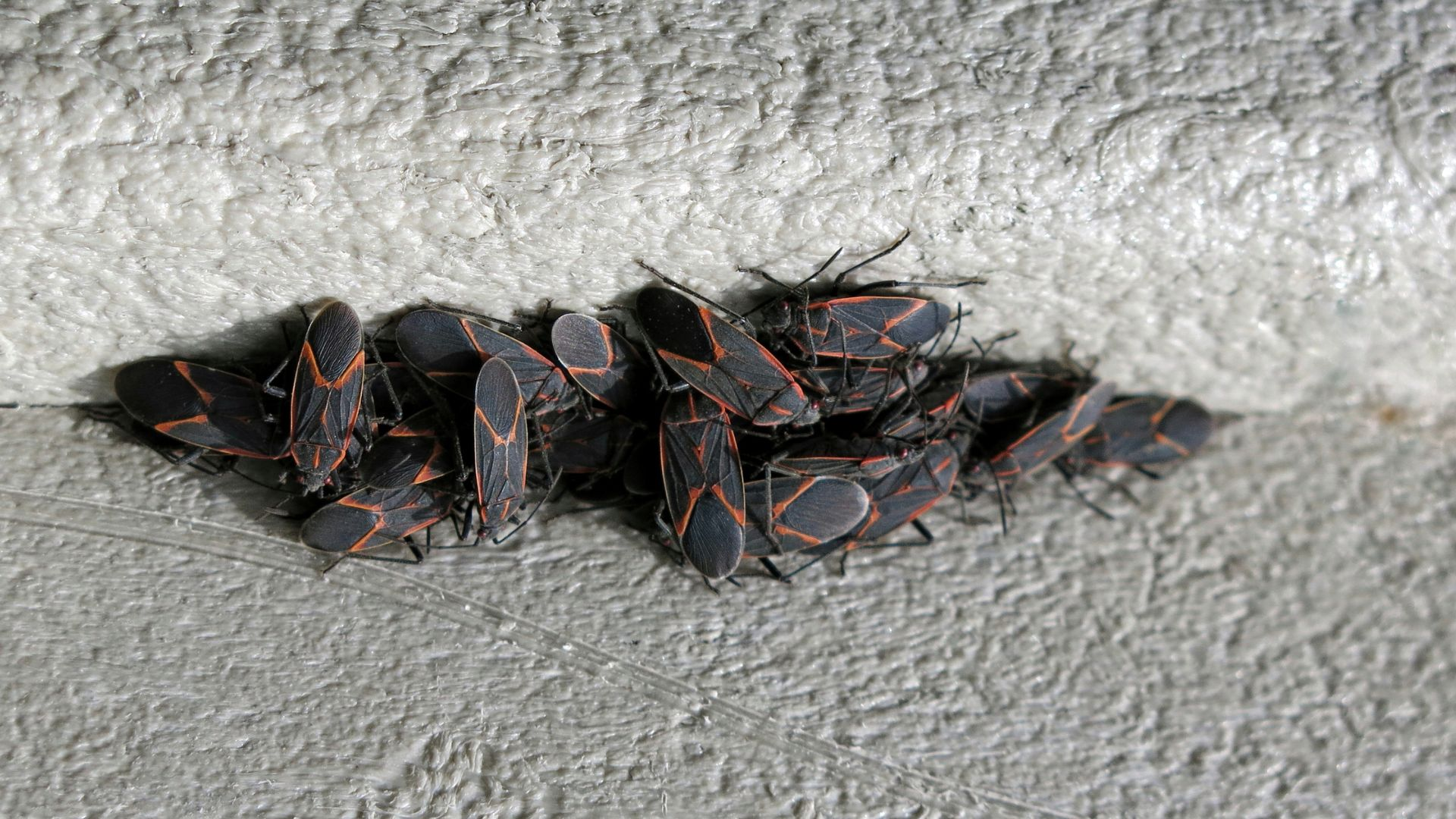
Colonies frequently migrate from one site to another. The Red Imported Fire Ant queen only needs a few workers to start a new colony. They can develop a new mound several hundred feet away from their previous location in hours.
Flooding causes colonies to leave their mounds and float until they can reach land to establish a new mound.
Commonly Mistaken Insects
The boxelder bug is also often mistaken for the scarlet lily leaf beetle. The scarlet lily leaf beetle is very harmful to gardens (especially Lillies), as it consumes leaves very quickly. These black and red bugs are predominantly red on most of their body. But the scarlet lily leaf beetle isn't the only look-alike; there are many other insects commonly mistaken for boxelders.
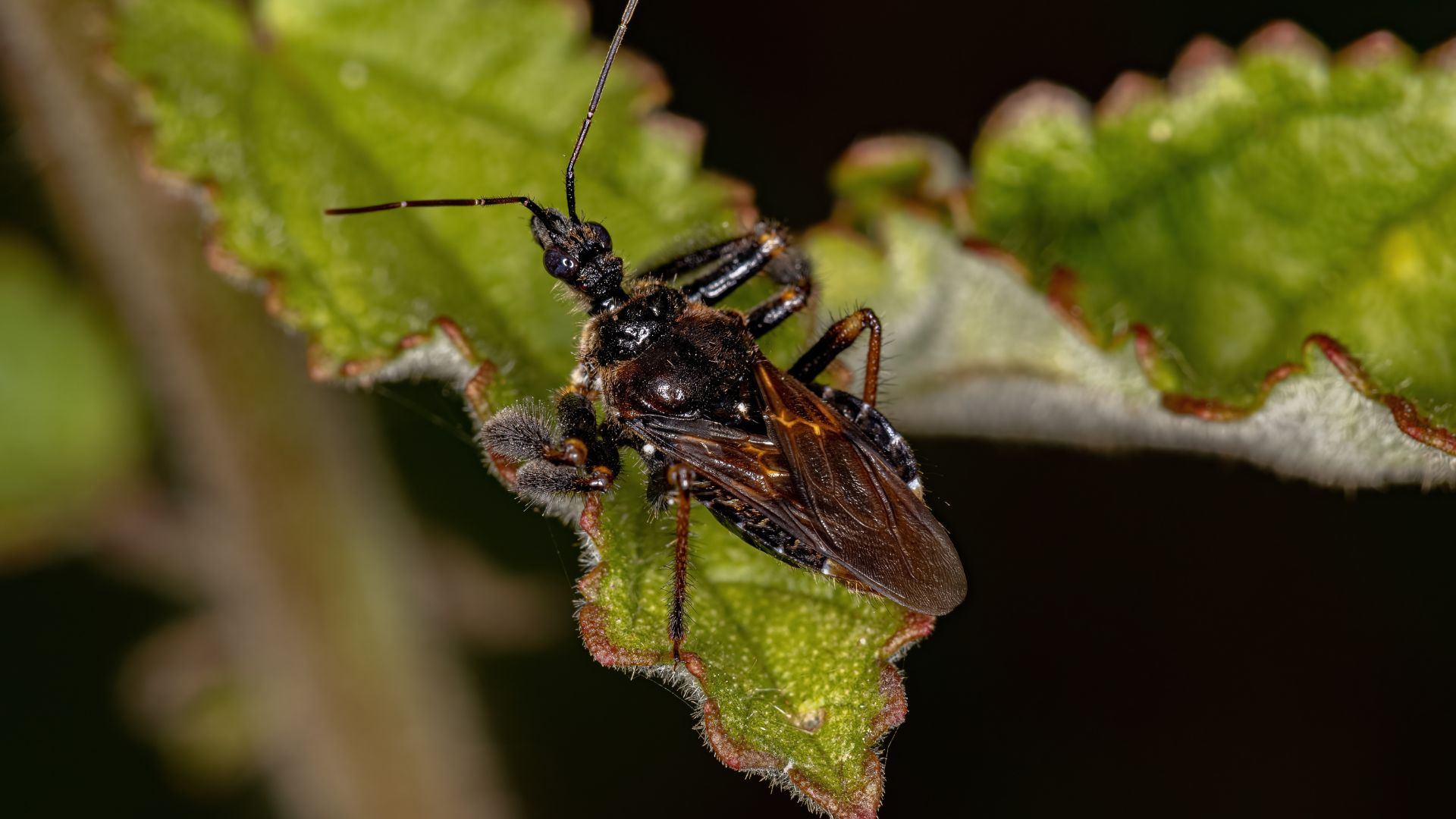
Boxelders can also be confused with bee assassin bugs. The bee assassin bug, however, has a much stockier and brownish appearance. The bee assassin bug is much larger than a boxelder bug and primarily feeds on bees, as the name would suggest.
The milkweed assassin bug may also be mistaken for the boxelder bug, but it is generally more orange and bulkier. The milkweed assassin bug also has a more prominent head that is long and slender.
Asian lady beetles are similar in color to boxelder bugs but have a much more rounded body shape, appearing similar to ladybugs. Often, the Asian lady beetle larva looks like a black bug with orange dots. The Asian lady beetle is known to consume gardens.
Other frequently mistaken insects include the small milkweed bug and the two-spotted stink bug. The two-spotted stink bug has a much more elaborate design on its back. The small milkweed bug is the most similar in appearance to the boxelder, but it has noticeably brighter orange markings.
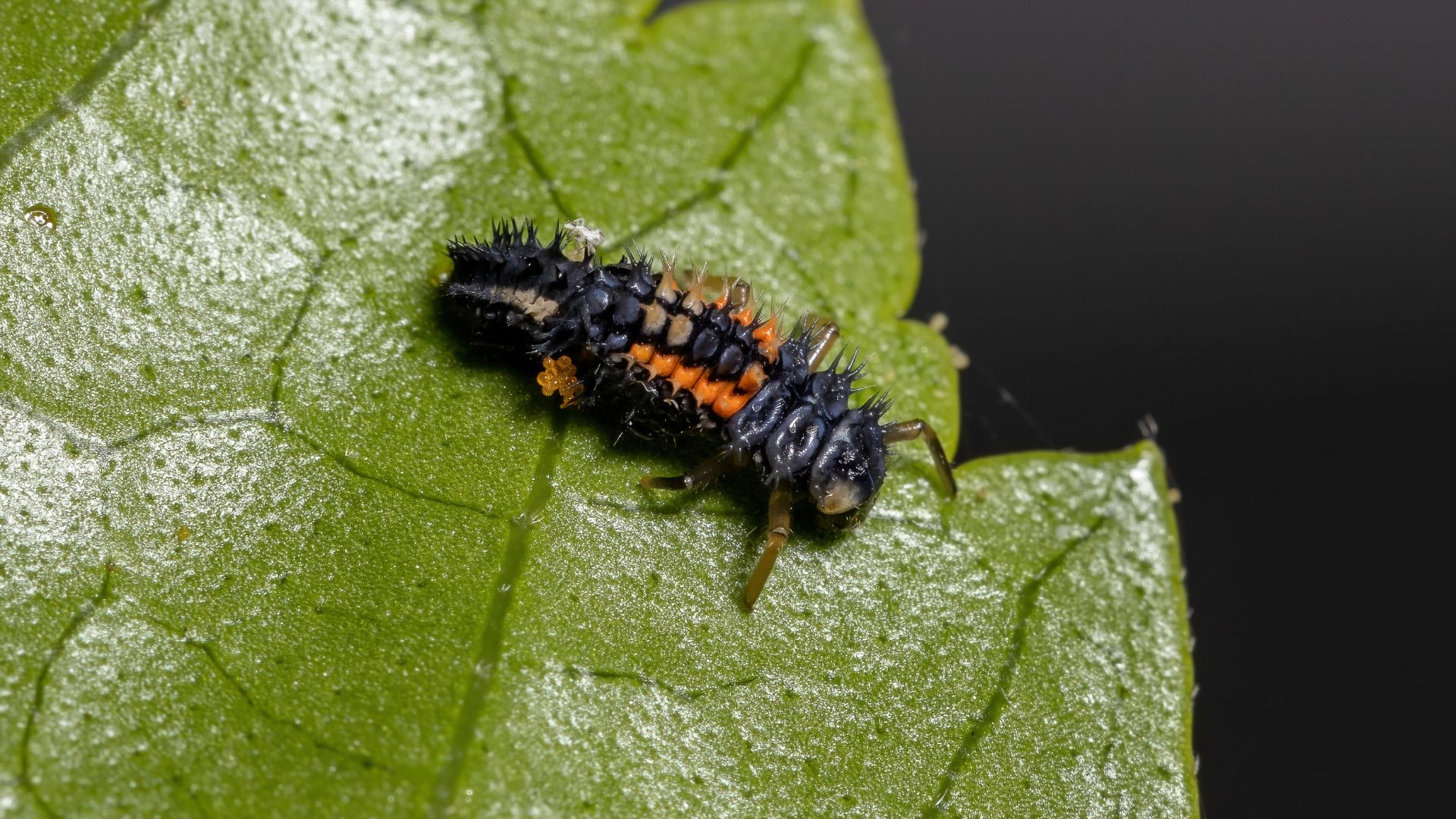
Boxelder Bug Bites
Boxelder bugs do very little damage to the trees they attack, but they can become a nuisance at certain times of the year. During the fall months, boxelders build up and form large populations around the foundations, bases of trees, along foundational walls, and fence rows.
A Nuisance Pest
When boxelder bugs invade a home, they are usually pests only by their presence. However, when boxelder bugs bite, their piercing-sucking mouthparts can sometimes puncture the skin, causing slight irritation. This irritation can be compared to that of a mosquito bite. Sometimes, they leave fecal material that may stain resting sites, such as curtains.
Most often, the box elder bugs that many homeowners see inside are adults. Nymphs, or immature box elder bugs, are less common but may still pop up inside and outside the home.
Adult Boxelder Bugs
The adult boxelder bug has a black body with red or orange patterns on its back. There are three distinct orange or red stripes. One is located at the center behind the head. The other two run parallel along the edges of its body. Dark wings run across its back.
Nymph boxelder bugs resemble their adult counterparts but lack wings and have a bright red color. After boxelder bugs lay eggs, the nymphs develop from boxelder eggs that are commonly seen on seedpods of boxelder trees. Eggs group together into yellow clusters and transition into a red color as the nymph develops.
These red and black bugs are about 1/2 an inch long and have a flat, stretched, oval body.
Color
-
Adults: Black body with three distinct orange or red stripes. One runs down the center of the body. The other two run parallel along the edges of the body. Dark wings.
-
Nymphs: Bright red with no wings
-
Eggs: Yellow clusters that redden during maturity
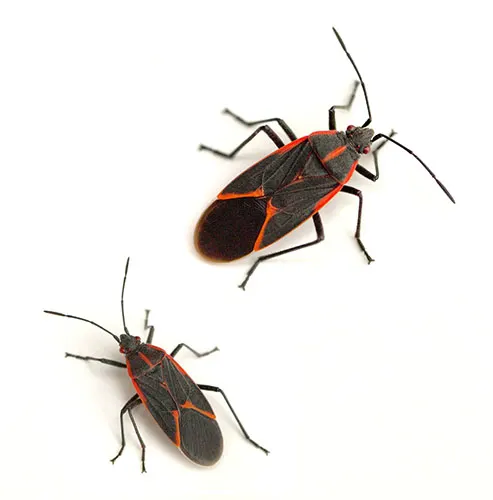
Proper Inspection for Boxelder Bugs
Knowing where to look inside and outside the home is crucial if you want to effectively get rid of boxelder bugs.
Adult boxelder bugs enter the home during the fall months when temperatures drop and they are in need of shelter. Therefore, it is also imperative for homeowners to understand the life cycle of the insect so they can be on the lookout all year round.
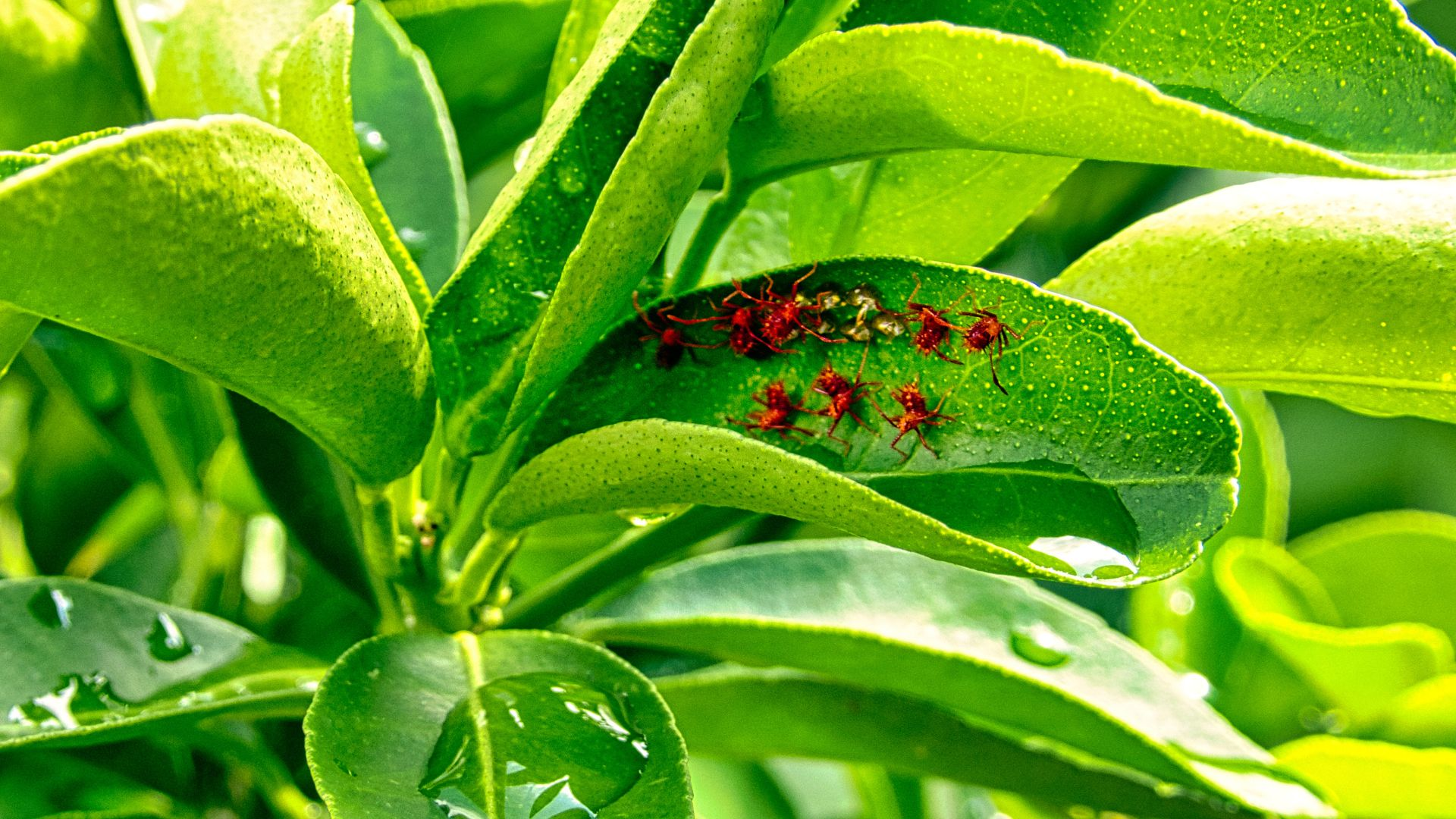
Life Cycle
Adults find cover beneath loose tree bark, among plant debris, or in homes, garages, and barns throughout the winter. As the temperature warms up in the spring, they emerge. They graze for two weeks on boxelder seeds and other flora near the ground before beginning the mating cycle.
The female boxelder bugs fly up female boxelder trees, where they deposit their eggs on seed pods on the undersides of leaves. They'll lay eggs on stems and branches as well. It takes 10-14 days for eggs to hatch. All stages of the boxelder can be found in and around host trees during the summer. Only adults survive the winter, while nymphs continue to grow into the fall.
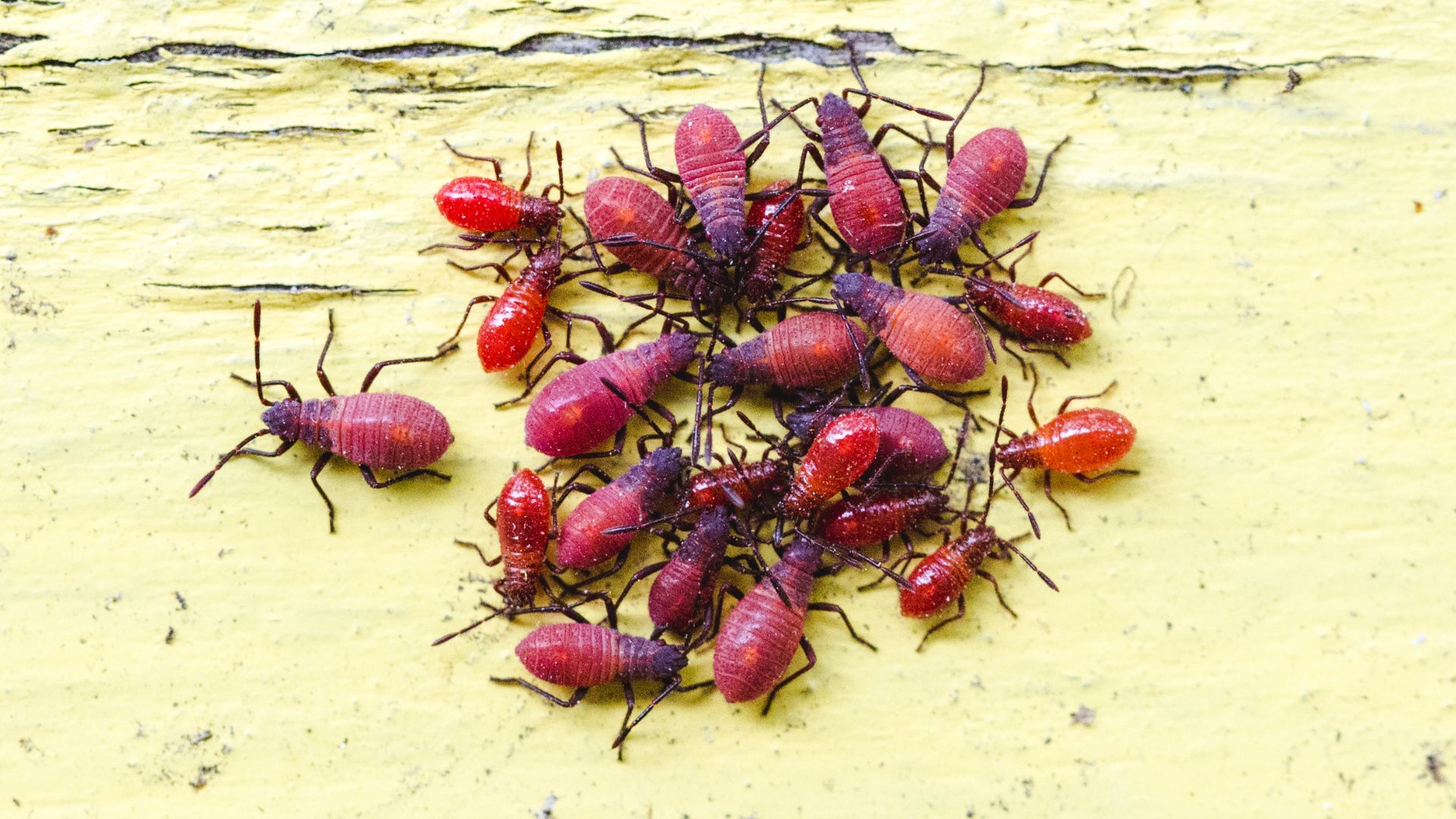
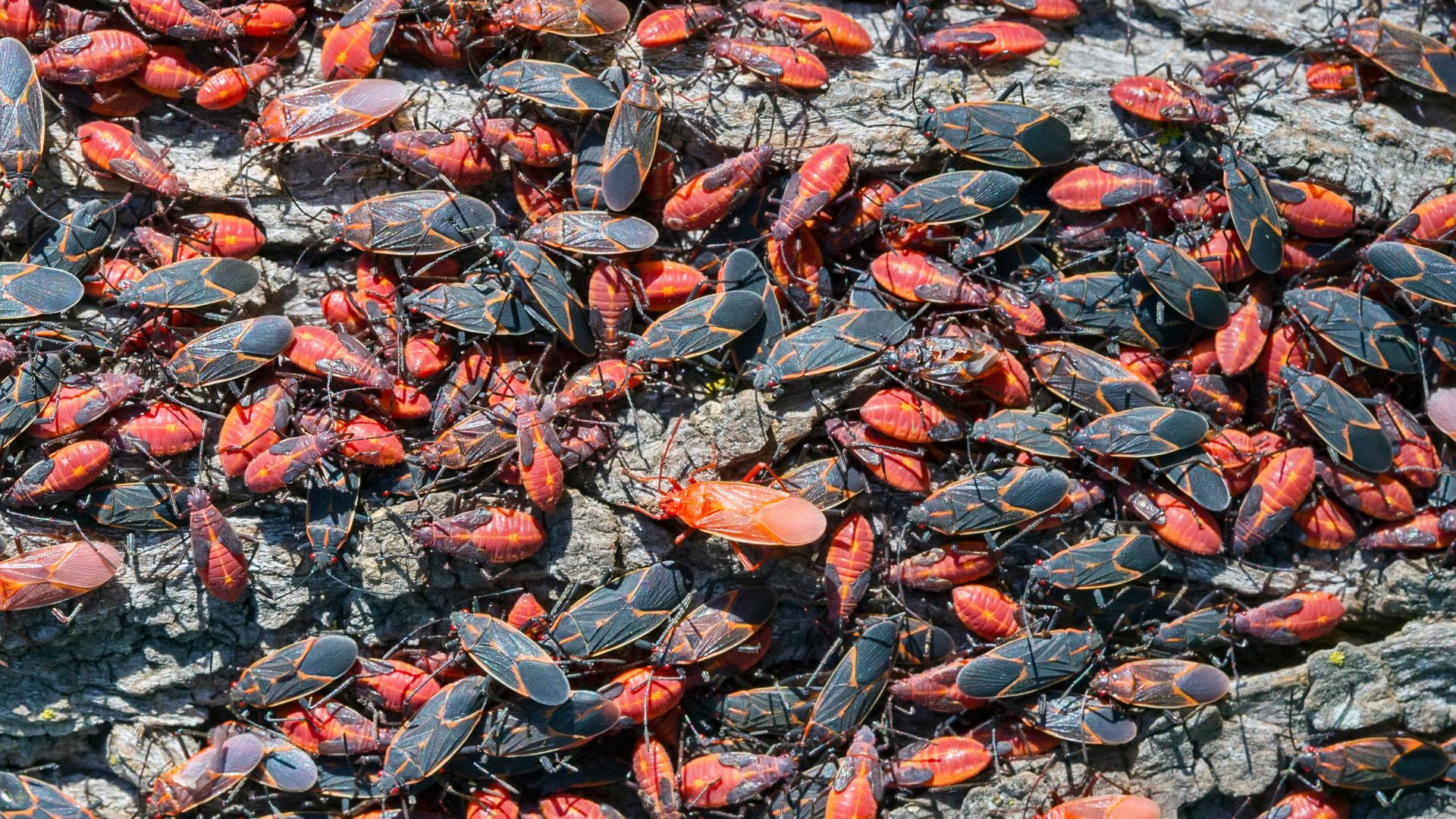
Indoor Inspection
Adult boxelder bugs will enter homes during the fall months to seek shelter in protected places. This is why they are commonly seen in the cracks and crevices in walls, wall voids, attics, garages, doors, under windows, and around foundations. They gather together on the warm, sunny sides of swellings before they congregate inside.
These red and black flying bugs also like to nest inside exhaust fans in the kitchen and bathroom, window screens, skylights, soffit vents, and roofs. When inspecting for box elder bugs, be sure to check in these discrete areas inside your home.
Outdoor Inspection
Boxelder bugs feed off female boxelder tree seedpods, so check in and around these trees first. Inspect the condition of the trees and if any pruning or removal work may be necessary. Check maple, ash, or other trees you may have outside for the presence of adult bugs or egg clusters.
Inspect the exterior integrity of your home for any cracks or crevices that may serve as an entrance for the insects. Examine any stacks of wood, organic debris, or vegetation where boxelder bugs may gather to survive in the winter.
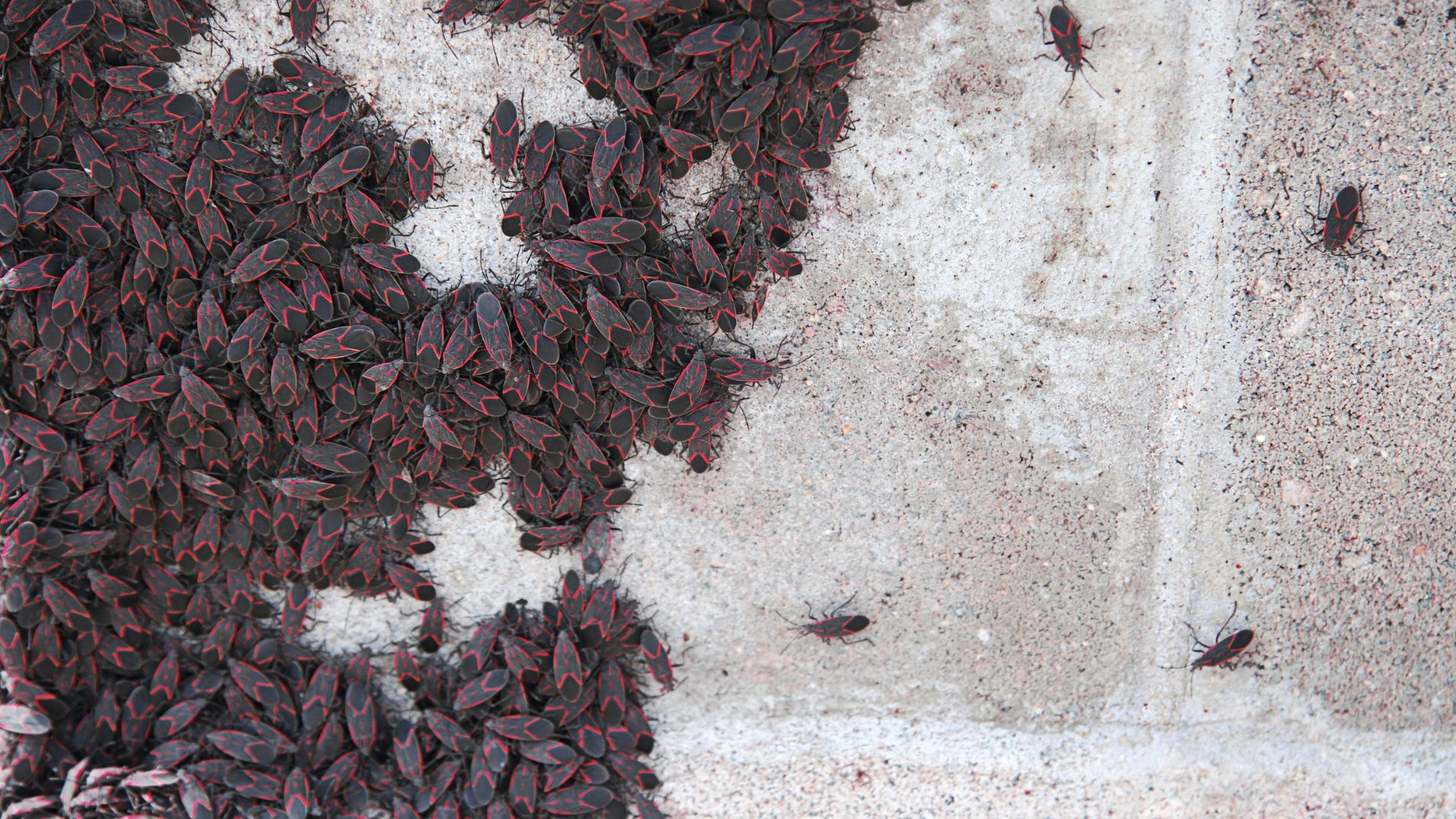
Top Tips for Boxelder Bug Inspection
-
If you’re inspecting during warmer months, look around boxelder, maple, or ash trees outside for the presence of boxelder eggs. Inspect the sunny areas inside your home for any red and black bugs.
-
When outside, inspect trees. Look near tree roots, leave piles, organic vegetation, or woodpiles
-
When inside, inspect any cracks or crevices, window sills and screens, exhaust fans, skylights, and inside walls.
-
Take note of any entry points that exceed 1/8 inch. This is where boxelder bugs will enter and begin to invade the home.
-
Once they have come inside to overwinter, total control is nearly impossible as locating all infested voids is difficult.
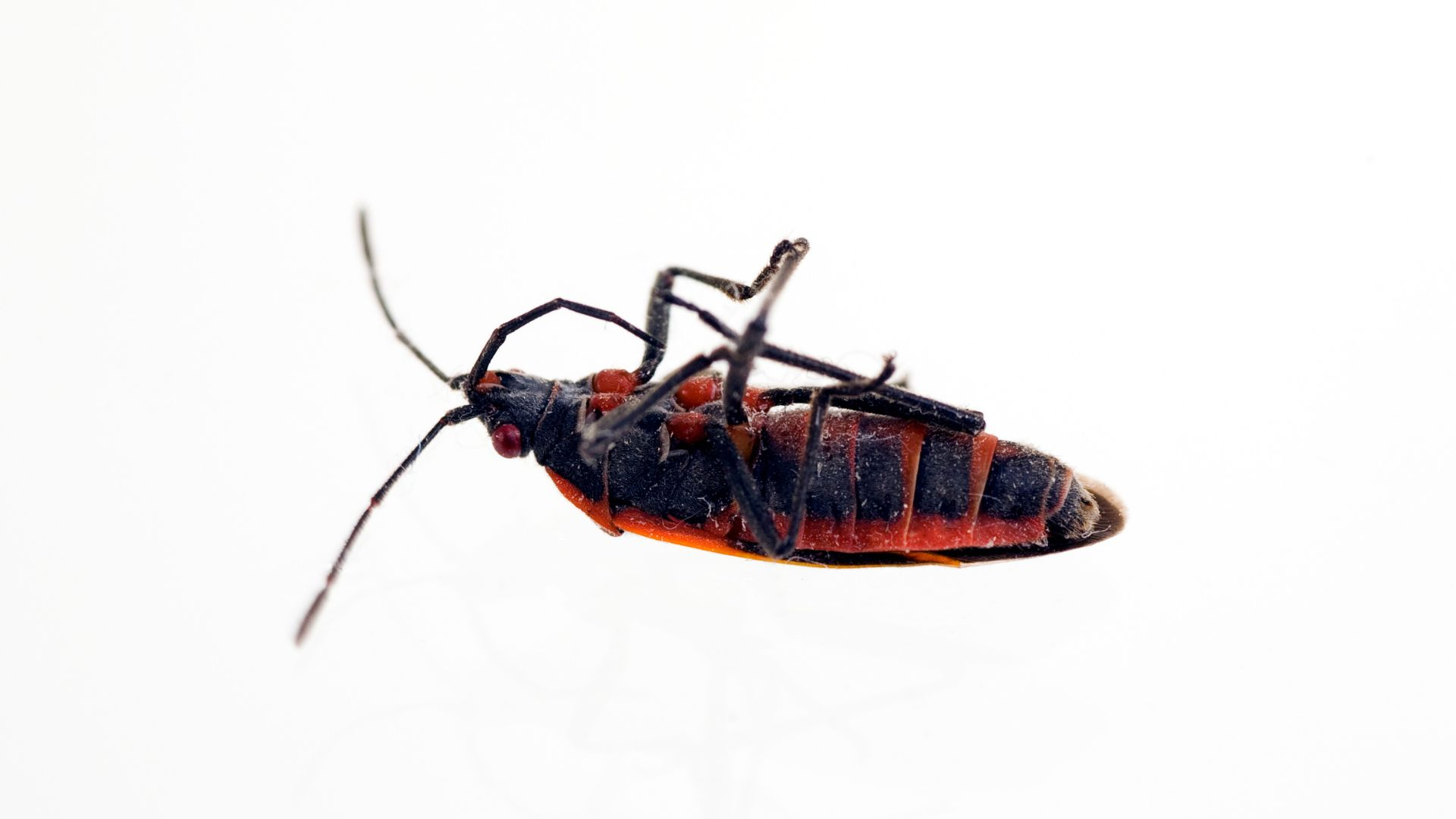
Mechanical Prevention for Box Elder Bugs
It is a good idea to exclude and eliminate boxelder bugs during the summer months. Concentrate on the south and west exterior walls. Avoid excluding them during the months when they are most likely inside. If you seal them inside, they may enter interior rooms in large numbers.
-
Plug weep holes with wire mesh.
-
Foundation and attic vents should be equipped with tight-fitting screens
-
Fix broken window screens and door jams
-
Plug cracks in the foundation or roof with exclusion materials
-
Caulk cracks and caulk around utility lines
-
Mechanical means of exclusion
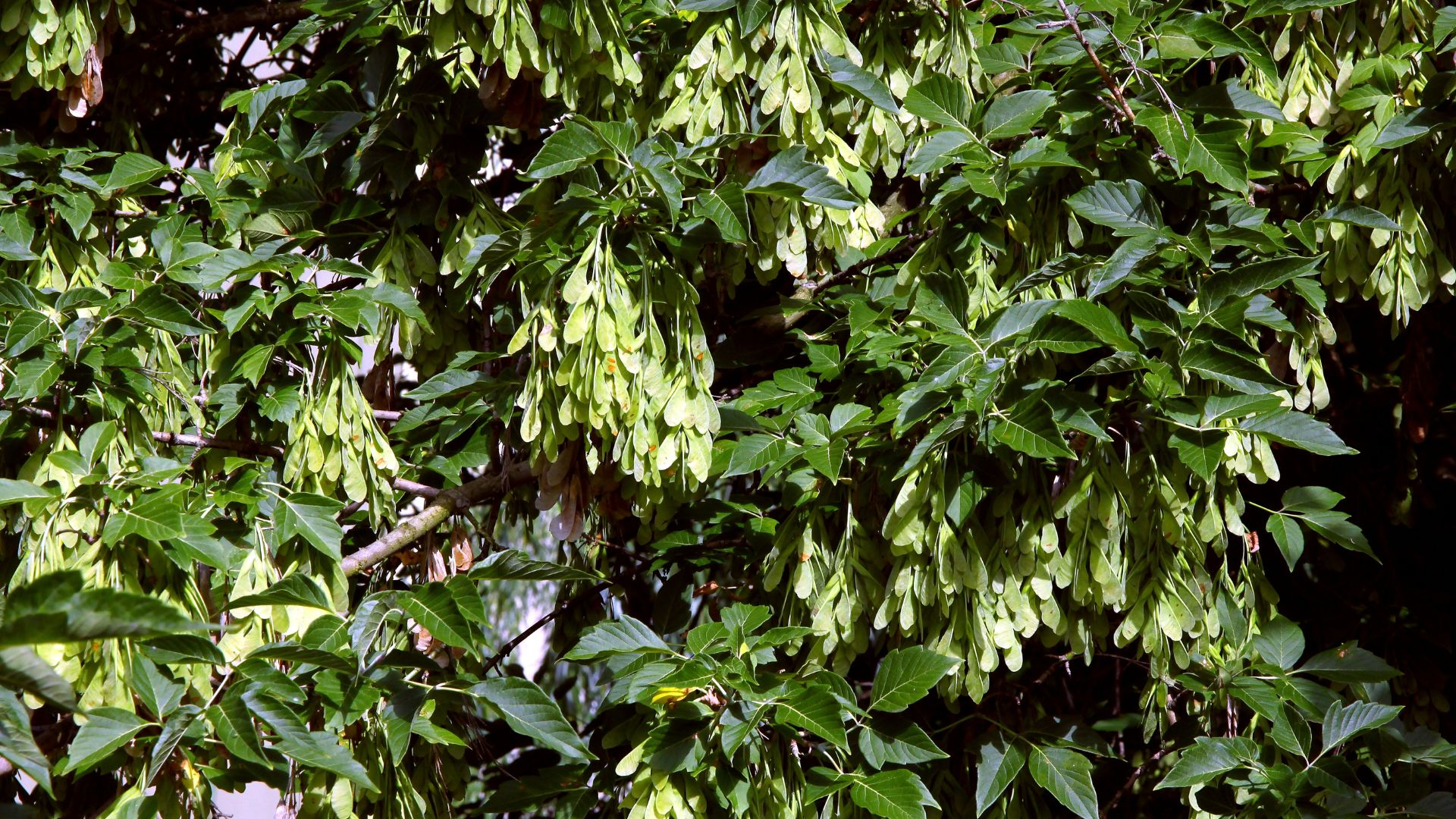
Another measure to prevent boxelder bugs is to reduce the amount of clutter inside your home. Although they typically find themselves inside walls, they will choose anywhere that is safe and free of disturbance. By eliminating the mess inside, you can reduce the number of viable spots that a boxelder bug will reside in.
If you have box elder trees on your property or in your neighborhood, remove fallen seeds to help repel boxelder bugs. Better yet, if you want the perks of boxelder trees without the pesky red and black bug, opt for those with no seed-bearing properties.
Get Rid of Boxelder Bugs with DIY Pest Control
At DIY Pest Control, we understand the frustration boxelder bugs can cause and the importance of a bug-free home. That's why we've carefully curated a selection of proven, high-quality products designed to tackle boxelder bug infestations effectively. Whether you're looking for eco-friendly solutions or powerful, professional-grade treatments, our range has everything you need to protect your home and family from these persistent pests. Trust DIY Pest Control to provide you with the right tools and knowledge for pest-free living. Shop with us and take the first step towards a boxelder bug-free environment.
Shop Boxelder Bug Control ProductsHow To Get Rid Of Boxelder Bugs
Boxelder Bug Information & Prevention
Boxelder Bug Identification
Boxelder bugs are common pests over much of the United States.
Adults are about 1/2 inch long. They are bright orange, red or black with narrow reddish lines on the back.
Boxelder bugs feed principally by sucking juices from the box elder tree but are sometimes found on other plants (especially maple trees). They do very little damage to the trees they attack, but they can become a nuisance at certain times of the year. Boxelder bugs develop by gradual metamorphosis, from egg to nymph, then to adult.
When box elder bugs build up to large populations and invade a home, they are usually pests only by their presence. However, their piercing-sucking mouthparts can sometimes puncture the skin, causing slight irritation. Sometimes, they leave fecal material that may stain resting sites such as curtains. They may be seen to gather around the foundations, bases of trees, along foundational walls and fence rows during the fall months. They are part of a group of insects called "fall invaders," which are occasional invaders.

Adult boxelder bugs will enter structures into the fall, seeking winter shelter.
Boxelder bugs enter structures in the fall months and "overwinter" in protected areas. They seek shelter in protected places such as houses and other buildings, cracks or crevices in walls, wall voids, attics, doors, under windows, and around foundations, particularly on the south and west exposures. Boxelder bugs can come out even during the dead of winter when it is cold outside, and the sun is shining.
They will then emerge in the spring to seek out host trees to feed and lay eggs.
How To Get Rid Of Boxelder Bugs
Prevention-Key to Boxelder Bug Control
- Prevention is key to getting rid of boxelder bugs. Spray the exterior walls of your home in the fall with a residual insecticide to stop them from over-wintering if you have not sprayed earlier. If you treat earlier (early summer months), you have the best chance to control the immature stages of boxelder bugs. Ideally, spray twice, once in the spring-early summer months when they emerge and once in the fall when they seek shelter. Once they have come inside to overwinter, total control is nearly impossible as locating all infested voids is difficult.
- If your home has a prior history of boxelder bugs, find and seal as many exterior cracks as possible during the summer.
- The easiest way to remove boxelder bugs once they are indoors is a vacuum cleaner.
- You can also use an insecticide spray around the baseboards and window seals on the home's interior to further control the bugs. Interior spray should be the last line of defense, however, because it won't stop the bugs from coming into the home. The boxelder bug will eventually die after it comes into contact with the insecticide.
Recommended Residual Insecticides For Boxelder Bug Control
To help prevent box elder bugs, cluster flies, ladybugs, and similar pests from entering in the fall, spray fast-acting synthetic pyrethroids such as the ones listed below on the structure's exterior walls. Spray around eaves, attic vents, windows, doors, under-fascia lips, soffits, siding (including under lips), and any other possible points of entry, concentrating on the south and the southwest sides. It is also helpful to spray around the perimeter. Shady areas are less likely to attract box elder bugs. Spray Bifen It or Avesta CS around the perimeter outside. Avesta CS may also be sprayed on the inside.
Key Takeaway
To prevent Boxelder Bugs from entering your home in the fall, treat the outside perimeter with a good all-purpose concentrate.
Pay particular attention to the south and west exposure of the house.
Mechanical means of exclusion
Exclude Boxelder bugs during the summer months. Concentrate on the south and west exterior walls. Avoid excluding them during the months when they are most likely inside to not seal them inside. If you seal them inside, they may enter interior rooms in large numbers.
- Plug weep holes with wire mesh.
- Foundation and attic vents should be equipped with tight-fitting screens
- Fix broken window screens and door jams
- Plug cracks in the foundation or roof with exclusion materials
- Caulk cracks and caulk around utility lines
Written by our resident pest control expert Ken Martin.
Written by our resident pest control expert Ken Martin.




